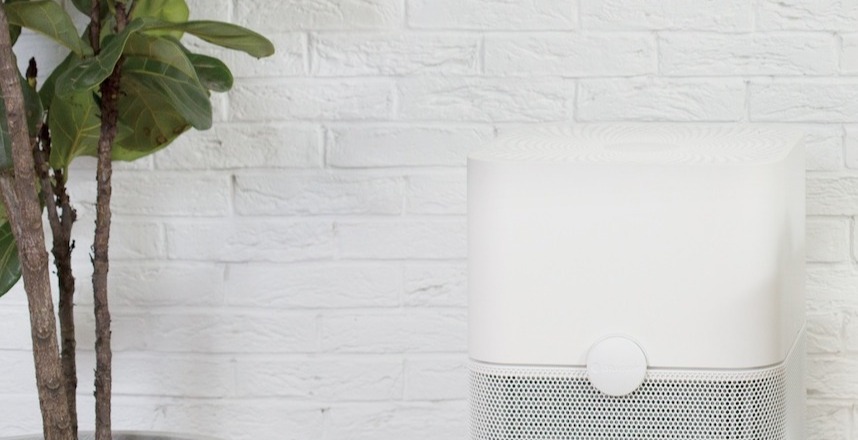Newsletter
Many of us spend vast amounts of time in the office. Whether we’re writing emails, attending meetings, or chatting over the water cooler, the piece of office work that is most constant is breathing. The air in our workplaces has a huge impact on physical and psychological health, morale, and productivity, so it is paramount that it is as clean as possible. One of the most effective ways to ensure this happens is to install air purifiers in the office. In this article, we’ll tell you what you need to know to get the most out of these devices.
What Does an Air Purifier Actually Do?
Simply put, office air purifiers remove impurities from the air. They consist of two main parts: a fan and a filter. The fan draws air through the filter, which catches a variety of particles and gasses, allowing clean air to flow out.
The range of particles and gasses that air purifiers can tackle depends on the device. Depending on the type of air purifier and the technologies it uses, some of the best officer air purifiers can remove PM2.5, VOCs, bacteria and viruses like COVID-19 and influenza, pollen, dust, formaldehyde, and nitrogen dioxide, all of which have adverse effects on health if left to circulate.
What Benefits Can You Expect from Using Air Purifiers in the Workplace?
Research shows that 57% of offices suffer from sick building syndrome, a condition where poor air quality can cause fatigue, headaches, sinus infections, asthma, chronic respiratory illnesses, pneumonia, and even cancer. By installing an air purifier, you can remove the harmful elements in your air that contribute to sick building syndrome, reducing the likelihood that any of these outcomes will affect your staff.
However, eliminating sick building syndrome is not the only benefit of these devices. Let’s take a look at some of the others:
Productivity:
Harvard Professor Joseph Allen has concluded that the productivity benefits of improving indoor air quality in offices come to $6,500 per person, while research by the Lawrence Berkeley National Laboratory has found that improvements made to indoor air quality can boost workplace performance by 10%. An air purifier can do a huge amount of this work, translating directly into profits for your company.
Reduced sick days:
Of course, the improved air quality fostered by air purifiers doesn’t simply reduce headaches, fatigue, and other adverse symptoms in your employees. It also means they’re in the office a lot more. Research has shown that IAQ improvements, such as the installation of purifiers, can reduce staff sick days by 35%. That means far fewer days struggling with a reduced workforce, and a significant cut on costs incurred by illness-related absences.
What to Look for When Choosing Air Purifiers for Office Buildings
While it is undeniable that an office air purifier has the potential to save you time and money, and bolster the health of your employees, it is essential that you choose one that matches your needs. Below is a breakdown of the most important aspects to consider when choosing yours.
Right-sizing your air purifier
If the device is too small for your space, it won’t be able to clean all of the air quickly enough, while if it’s too large, you will waste costly electricity. CADR (cubic meters per hour) refers to the amount of air your purifier can clean in an hour, and this is also the metric you need to use to find one that’s just right. Essentially, you should match half of the CADR (as closely as possible) to the size of your workspace.
To determine the size of the air purifier you need, you should first find the volume of your office in cubic meters. You can do this with a simple formula: length x width x height. Once you have established the cubic capacity of the space, multiply this number by two. You will then have found the CADR (cubic meters per hour) required. You should take this last step because ASHRAE recommendations state that office air should be replaced at least twice per hour.
UV, HEPA, carbon… or all of the above?
Filter types are also an essential consideration when choosing an office air purifier. Different types of filters are better equipped with different airborne hazards. There are three main types of filters for office air purifiers: HEPA, carbon, and UV. HEPA filters remove dust, mold, pollen, and pathogens from the air; carbon filters neutralize hazardous gasses and remove odors, while UV filters serve to kill bacteria in the air.
So which type of air purifier do you need? It depends. In an office, a HEPA filter is most crucial for removing elements likely to contribute to sick building syndrome. In premises that deal with processes involving gas runoff, a carbon filter is more important. Where a sterile atmosphere is paramount, UV reigns supreme.
Check your decibels
Noise levels are a hazard generally associated with powerful electrical equipment, and air purifiers are no exception. When it comes to these devices, the larger they are, the noisier they tend to be. Fortunately, research has shown that, when it comes to distracting your workers, intermittent noise is a bigger culprit than the background hum of an air purifier. Still, it is wise to check the decibel levels displayed on promotional materials, so you can choose the quietest device that fits your budget and needs.
Is There Anything That Office Air Purifiers Can’t Do? The Answer Is Yes
Office air purifiers may be miracle workers in certain contexts, but they can’t replace ventilation. This is because, while purifiers rid the air of harmful particles, they can only work with what they are given, and can’t replace the oxygen lost due to inhalation. Unventilated indoor air will continue to grow stale, with or without your air purifier.
Nor can most air purifiers accurately detect issues with your air. If there is a spike in PM2.5 or VOCs, your air purifier will help to reduce the impact, but it won’t tell you about it. For this reason, it is best practice to use an office air purifier alongside IAQ monitors. This way, you will be aware of whether or not your device is doing an adequate job, and can make the adjustments necessary.
A Vital Piece of the Puzzle
While air purifiers are not a cure-all for IAQ-related issues, they do perform a crucial function, cleaning the air of hazardous gasses and particles, and reducing the risk of pathogen exposure in the workplace. The most prepared businesses use these devices alongside a good ventilation system and a robust IAQ monitor set-up, combining air cleaning technology with the data required to adapt to unforeseen challenges.
When purchasing air purifiers for your office space, remember to ensure the CADR is double the volume of your premises, check the decibel level, and choose a device that combines UV, HEPA, and carbon filters. With each of these bases covered, you will be on your way to pristine air and a healthier workplace.
To learn how to choose the right commercial air quality monitor for your IAQ optimization needs, don’t miss out on our FREE crash course: The Insider’s Guide to Choosing the Right Commercial Air Quality Monitor






.png?width=200&height=148&name=Menu%20C%20(2).png)

.png?width=307&height=228&name=Menu%20-%20D%20(1).png)
.png)





